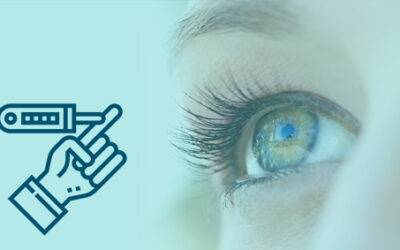
7 Warning Signs of Cataracts
Cataract, which is a commonly occurring vision problem that develops in people after the age of 60, is a leading cause of age-related preventable blindness worldwide. Cataracts are caused by a clouding of the eye’s natural crystalline lens due to a gradual build-up of proteins in the eye. Most people usually develop cataracts in both eyes, but they may not necessarily develop at the same time or be the same in each eye. Cataracts are usually not painful and do not make your eyes red or irritated, but the symptoms, such as sensitivity to light, may cause discomfort.
Cataracts generally start small and develop slowly over years, so you may not experience any problems with your vision at first. With time, however, most cataracts will grow and cover more of your lens. This will block and scatter the light that passes through your lens and cause certain specific tell-tale signs along with increasingly cloudy or blurry vision. If you are above the age of 50 and experience any of these symptoms, you should visit an ophthalmologist to have your eyes checked.
Blurred, dim, or misty vision
You may feel like you are living in a perpetual fog or looking through dirty eyeglasses or a smudged window. You may develop double vision in a single eye. Since cataracts can affect the focusing power of your eyes, you may find yourself squinting or blinking more often to focus better on things or need to change your eyeglass or contact lens prescription frequently.
Difficulty reading
You may have trouble reading newspapers and books even with eyeglasses or contact lenses. You may find yourself holding books closer to your reading light or require brighter lighting to read properly.
Sudden sensitivity to lights
You may start seeing visual “halos” around bright lights, such as lamps, headlights, and glare from the sun. Driving at night may feel uncomfortable and vision may become excessively blurry in bright light.
Decreased night vision
You may find it harder to see in poor or dim light such as in theatres and in dark restaurants. You may not be confident about driving anymore due to a lack of visibility even on clear roads.
Reduced intensity of colours
Colours may not look as bright as they did before or they may appear faded and yellow. You may have trouble differentiating between colours in the same family, such as pink and red.
Visible cloudiness
When the cataract is advanced or mature, it may be visible as a whitish or grey film over the pupil of your eye when you look in the mirror.
Reduced quality of life
Worsening vision from undiagnosed or untreated cataracts can increase your risk of falls. You may find it difficult to walk, use the stairs, run errands, or drive, and start withdrawing from leisure or enjoyable activities.
Cataracts cannot be prevented, nor can their growth be reversed. Presently, there are no medicines or eye drops that can dissolve or remove a cataract. Glasses and improved lighting may help to improve vision in the early stages, but surgery is the only effective way to remove a cataract and restore vision successfully. After the clouded lens is replaced with an artificial clear lens, cataracts will not form again in that eye again.
Read More Eye Care Blogs
4 Eye Problems That Can Result from Diabetes
If you are a diabetic, it means that the blood glucose or blood sugar in your body is too high. Most of the food you eat is broken down by your body into glucose - the main source of energy that is used for the various functions of the body. Insulin (a hormone made by...
Eye Safety at Home – Tips to Prevent Eye Injuries
ur homes are meant to be safe havens, but they can also be unexpected sources of danger, especially when it comes to eye injuries. Whether it's a mundane task like cooking, working in the yard or garden, Do-it-yourself projects, or even playtime...
Safeguarding Young Eyes – A Comprehensive Guide to Preventing Eye Injuries in Children
s parents, guardians, and caregivers, safeguarding our children's well-being is always at the forefront of our minds. Yet, amidst all the protective measures we take, we may inadvertently overlook a crucial aspect of their health - their eyes. Eye...







